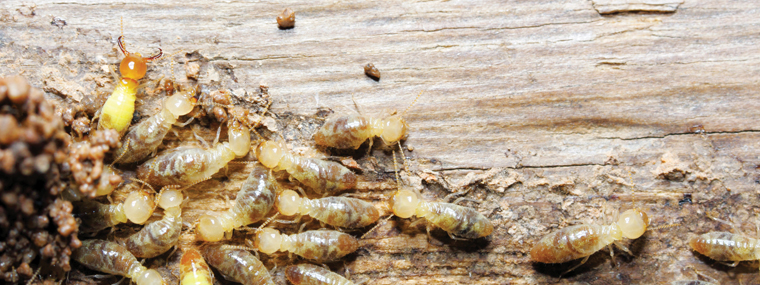
Termites, Rot, and Spalling
By Peter Cardillo / Published December 2018

Termites, rot, and spalling. No, this isn’t a joke name of a fictitious law firm. To be fair, I am a lawyer, and I do often go to court because of these very words. These words, however, happen to represent some of the potentially costliest problems Florida community associations and their members face.
Finding out you have a problem with any one of this trio of terms can be plenty unpleasant. But what’s even more troublesome is when any of these issues leads to something called collapse. Despite its obvious meaning, I’m talking here about the legal term for when a building is so far gone with damage that even if it’s not literally on the verge of falling down, it is structurally unsafe.
What many community associations don’t know is that their property insurance coverage policies typically include all three.
Let’s start with termites. Obviously, these voracious wood-chomping critters can do major damage to homes, condominiums, and apartments of all sizes, especially here in bug-friendly Florida. Most community associations and their members have contracts with pest control companies that include pledges to repair termite damage. Many of these same folks are unaware that their property insurers also cover such damages under most circumstances, including when damage is so bad to a structure that it is officially dubbed in a state of collapse.
What’s more, evidence of decay (again, the legal shading of the word) is what leads to collapse. Decay, like collapse, is typically covered under your property insurer policy. Complicating matters are how damage caused by termites and by rot are often confused and can even occur separately in the same structure.
Despite its generic-sounding name, rot is a term for a wood-destroying fungus. Often mistakenly diagnosed as water damage, rot can do similarly severe harm. Chances are, if you see rotten wood in your home or condominium, and it’s not termite damage, it’s rot, something a competent building inspector or insurance adjuster can easily spot.
It is true that your pest control company may only be liable for termite damages, but your property insurer is typically liable for decay and collapse caused by both termites and rot.
Last in our trio of troubles is spalling. Just like rot, spalling is a form of decay, which can lead to collapse. Unlike rot, spalling occurs not in wood but in stone and concrete. If, like so many of us here in Florida, you live by our abundant coastline, you’ll probably have experienced at least some problems with spalling.
Spalling means the disintegration of stone or concrete, typically caused by exposure to saltwater. Spalling often begins around steel re-bar commonly used to strengthen stone and concrete structures such as buildings and seawalls.
Despite what some insurers have tried to argue in court, spalling is a form of decay covered under “all risk” property insurance policies. Indeed, I’ve successfully sued a number of national insurers involving just such spalling issues, recovering millions of dollars for condominium and apartment owners.
Like most Floridians, you’ll likely encounter one or more of the termite, rot, and spalling trinity. But unlike so many, don’t be taken advantage of by believing the false claim that these aren’t covered. Instead, take some time to understand what your insurance policy does and does not cover.
Peter Cardillo
Cardillo Law Firm
Tampa-based Cardillo Law Firm is a property damage and plaintiffs litigation firm devoted to the area of termite and other property damage claims and property insurance law. Board Certified attorney Peter Cardillo may be reached by email at Pete@cardillolaw.com or phone at (877) 642-2873. For more information, visit www.cardillolaw.com.


